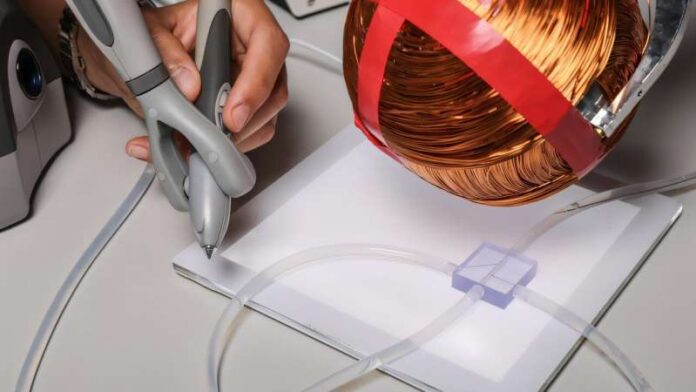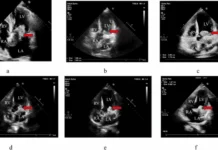EPFL researchers developed a surprisingly tiny and ultraflexible neurovascular microcatheter. It is powered by blood flow and can safely transit the most complex branched arteries in seconds.
Microcatheters are medical devices that can snake through the body’s blood channels. And offer life-saving therapies, such as treating clogged arteries or stopping bleeding. They can also be used to stop blood supply to a tumor or to administer highly targeted chemotherapy.
Until now, interventional neuroradiologists have utilized guidewires to carefully guide microcatheters around blood arteries’ tortuous twists and bends. A time-consuming push-pull-torque approach that risks damaging vessel walls. However, even these devices are too huge to reach the brain’s most distant and heavily branched blood arteries, which can measure less than 150 microns in diameter—roughly the size of a human hair.
To address these issues, researchers have developed untethered microrobots. That can be steered to a treatment site by magnetic fields or acoustic waves. However, Selman Sakar, head of the MicroBioRobotic Systems Laboratory at EPFL’s School of Engineering, believes that with an upgraded design, catheters can still perform well.
Sakar explains:
Catheters eliminate concerns about device removal after use, and don’t have limited payloads. At the same time, many blood vessels lie beyond a traditional catheter’s reach
That’s why we have developed and tested MagFlow: an ultraminiaturized magnetic microcatheter—twice as small as benchmark microcatheters—that minimizes contact with vessel walls by hitching a ride on the blood stream’s own kinetic energy.”
Magflow
MagFlow was first described in 2020 as a ribbon-like, flat polymer device with a magnetic tip. In partnership with interventional neuroradiologist Pascal Mosimann of Toronto Western Hospital (Canada), Sakar and recent EPFL graduate Lucio Pancaldi have developed this idea into a fully working microcatheter. Two linked polymer sheets enable the device’s body to expand “like a fireman’s hose”. To transport thin or viscous biological liquids.
In tandem, the EPFL team created OmniMag, a robotic steering platform. That guides the microcatheter with a magnetic field generator installed on a robotic arm. OmniMag uses the doctor’s hand movement on a stylus to determine the orientation of the magnetic field required to aim MagFlow’s magnetic tip in the appropriate direction.
Looking ahead, the scientists believe MagFlow has the ability to reach blood arteries in adult patients with hemorrhagic stroke or arteriovenous malformations, as well as pediatric cancer patients. They say their technique has already piqued the interest of the medical community, and they are already collaborating with clinicians at Lausanne University Hospital (CHUV) and Jules Gonin Eye Hospital to develop MagFlow for use in retinoblastoma treatment.




